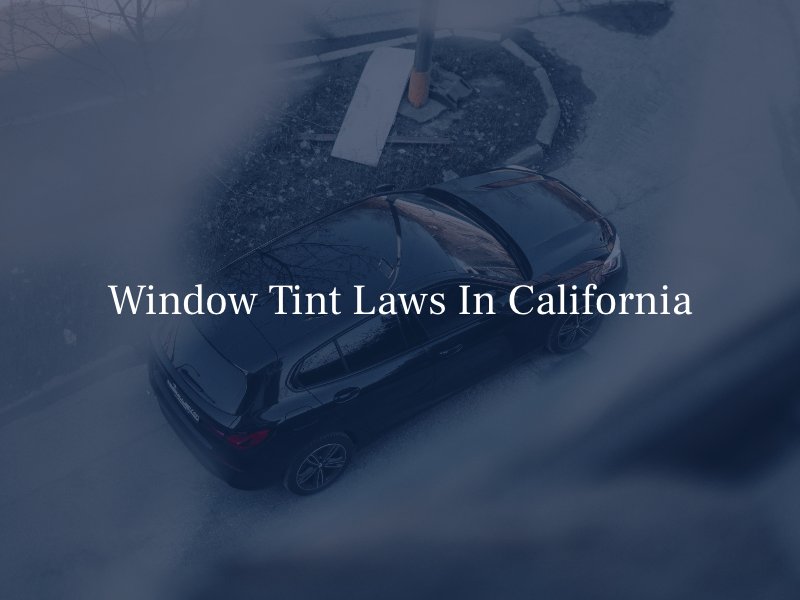Window Tint Laws In California
July 21, 2023 Posted In Car Accidents
Window tinting is a popular modification that many vehicle owners choose to enhance privacy, reduce heat, and improve the overall appearance of their cars. However, it is important to be aware of California’s window tint laws to avoid potential fines or legal issues. If you have been in an accident, contact our attorney today.

Understanding California’s Window Tint Laws
California has specific regulations governing the darkness or visible light transmission (VLT) percentage allowed for window tinting. The VLT percentage refers to the amount of visible light that can pass through the window film. The lower the percentage, the darker the tint. Here is what you need to know:
Front Windshield
California law (Cal. Veh. Code § 26708) prohibits any window tinting on the front windshield except for a narrow strip of tint along the top (commonly known as the “sun strip”). The sun strip must be no more than 4 inches in height and cannot extend below the manufacturer’s AS-1 line, which is typically marked on the windshield.
Front Side Windows
For vehicles registered in California, the front side windows (driver’s and passenger’s sides) must allow over 70% of light to pass through (at least 70% VLT). In other words, you cannot have a significant tint on the front side windows that obstruct visibility.
Rear Side Windows
Unlike the front side windows, the rear side windows can be tinted with any darkness level. This means you can apply any level of tint to the rear side windows, including the use of dark or reflective films.
Rear Window
Similar to the rear side windows, there are no restrictions on the darkness level of the rear window.
Colors
It is against the law to use tinting in shades of amber, blue, or red. Any other color is allowed.
Tint Documentation
The state also mandates that you carry manufacturer certification for your tint to demonstrate that the manufacturer of the film complied with state law.
Exceptions and Additional Considerations
These regulations apply to non-commercial vehicles only. Commercial vehicles, such as taxis or limousines, have different tinting rules. Additionally, if you have a medical condition that requires special tinting for sun protection, you may be eligible for an exemption. However, you must obtain a certificate or letter from a licensed physician specifying your medical condition and the recommended tint darkness.
Enforcement and Penalties
Violations of window tint laws in California can result in incremental penalties. A first offense is often a “fix-it ticket,” warning the driver that they must address the problem immediately. A second violation is a $25 fine and an order to remove the tint. For a third offense, drivers can be charged with an infraction and fined $197.
How Illegal Window Tint Can Impact Accident Liability
Window tint that violates California law can significantly reduce a driver’s visibility, especially at night or in adverse weather conditions. As a result, it can increase the risk of accidents as the driver may have difficulty seeing other vehicles, pedestrians, traffic signals, or road hazards. If an accident occurs, the illegal window tint may be considered a contributing factor, and the driver may be held partially or fully liable for the resulting damages. If you’ve been involved in an accident, our Beaumont car accident lawyers can help you recover the compensation you deserve.